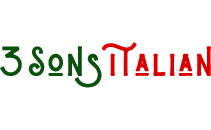Get to Know Pasta!
What’s the difference between cavatappi and rigatoni? What sauce goes well with fettuccini but not angel hair? Learn the answers to these questions and more with our quick guide to pasta!
- Angel Hair
Similar to spaghetti but finer, this delicate noodle is best used with light sauces, such as pesto. It’s very similar to capellini which is just a bit thicker.
- Cavatappi
Italian for “corkscrew,” this S-shaped tube has a corkscrew-like twist and ridges on the exterior to hold sauce. It works with almost any sauce, in cold salads or baked in casseroles. Despite being yellowish, cavatappi does not contain eggs.
- Farfalle
Also known as “bow tie pasta,” farfalle works in soups or salads, but is most commonly served with creamed-based sauces or fresh tomato sauces.
- Fettuccini
Long like spaghetti but flat to give more surface area to sauces, fettuccini is usually served al dente with cream-based sauces, particularly alfredo.
- Orzo
Although it’s shaped like rice, orzo is actually a pasta. It’s frequently used in soups and pasta salads.
- Penne Mostaccioli
Named for its resemblance to a “small mustache,” penne mostaccioli is shaped just like penne rigate. The only difference is that penne mostaccioli doesn’t have ridged surfaces. It’s commonly found in salads, stir fry dishes and salads.
- Penne Rigate
Like penne mostaccioli—but with ridged surfaces, which help them hold heavier or chunkier sauces.
- Rigatoni
Taken from the word for “ridged,” rigatoni are short, wide tubes of pasta. Their ridges and hollow tubing make them perfect for holding chunkier sauces or cheese.
- Vermicelli
Despite translating to “little worms,” vermicelli is a delicious pasta! In the United States, vermicelli is slightly thinner than spaghetti, but in Italy, it’s slightly thicker than spaghetti. Use it just like you would spaghetti—with any sauce of your choosing.




